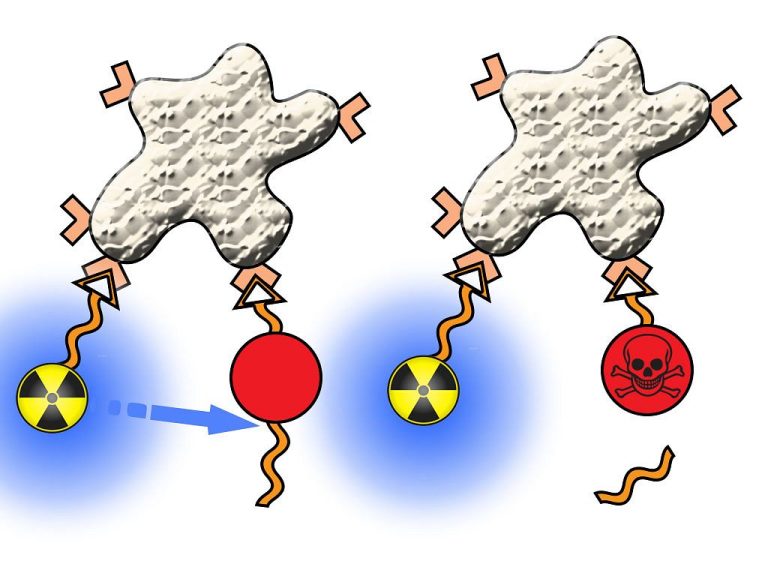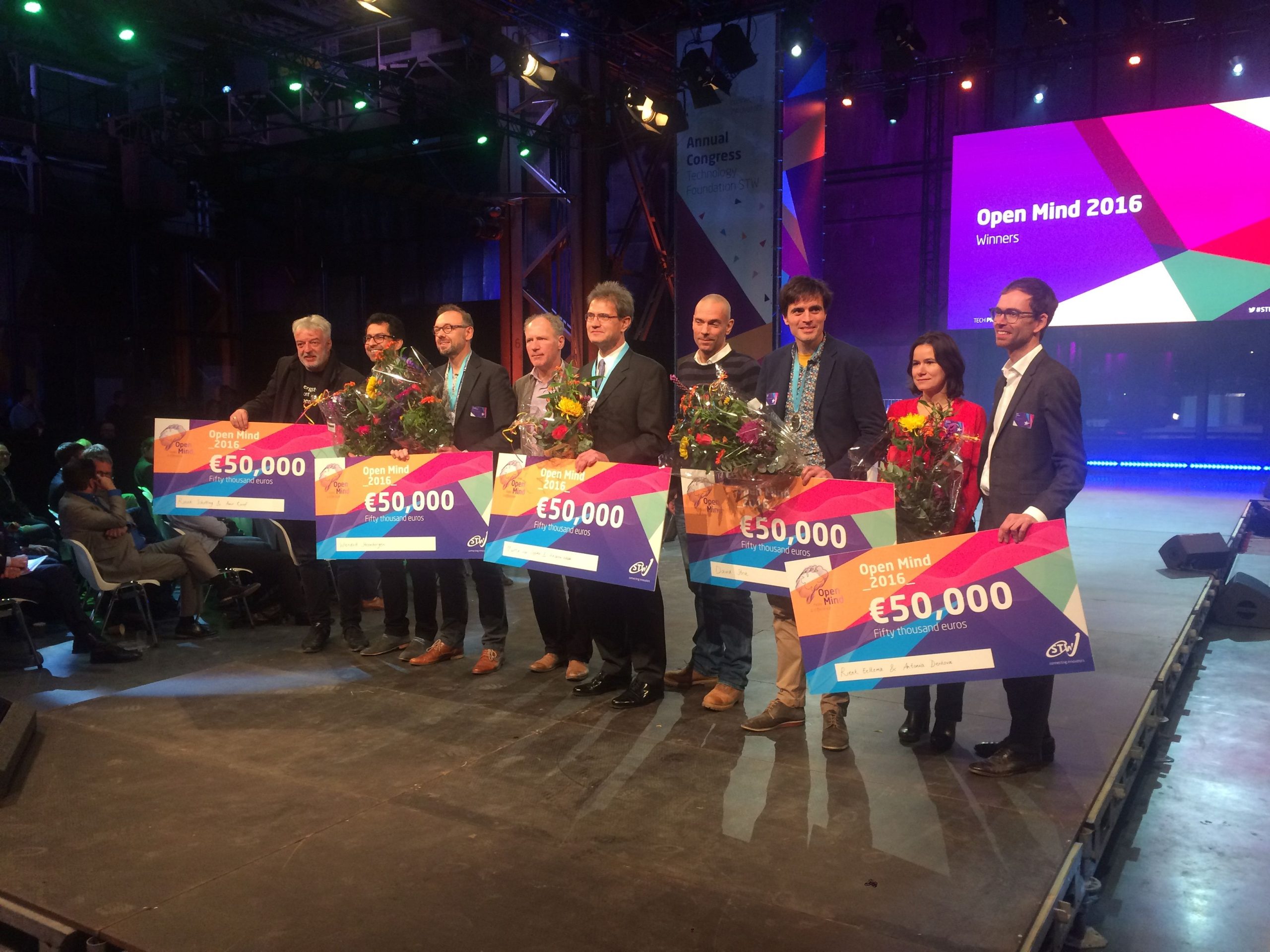TU Delft researchers Antonia Denkova and Rienk Eelkema received STW Open Mind funding. Their project involves activating chemotherapy specifically at a tumour with blue Cherenkov light. The award event took place in November last year.
One of the problems with chemotherapy is the lack of selectivity. A poisonous substance acts throughout the body causing side-effects like nausea, sometimes to the extent that the therapy cannot be continued.
“I have puzzled for a long time on how to target chemotherapy better onto the tumour,” said Dr. Antonia Denkova from the department radiation, science, and technology. Together with Dr. Rienk Eelkema from chemical engineering (both from the Faculty Applied Sciences) she developed a smart two-step system aimed to limit the poisonous activity to the tumour. The idea was awarded a 50,000 euro STW Open Mind grant last November. The funding buys the researchers one year to further develop their interesting idea. ‘Using Cherenkov radiation with chemotherapy,’ as their project is called, was one of five winners at the STW event.
Targeted therapy similar to chemotherapy exists, but only for superficial tumours. It’s called photodynamic therapy, and it works by making very aggressive and toxic oxygen by shining light on certain dye molecules.


Similarly, light can be used to activate so-called caged drugs, those are drugs that become active when part of the molecule is broken away (see graphic). When a patient receives a dose, the caged drug will circulate through the body and will accumulate onto the tumour, thanks to different targeting strategies. Exposure to light will then activate the caged drug and locally release the chemotherapeutics.
Now if you could shine a light inside the body, that would make such therapies applicable to a much wider range of tumours. And that’s what Eelkema and Denkova came up with in their STW proposal.


The team wants to deploy Cherenkov radiation to produce light at the site of a tumour to activate a caged drug that has accumulated there. Cherenkov radiation is best known as the blue light surrounding a nuclear reactor core in water. It is the result of electrons or positrons that originate from nuclear fission products and get decelerated by the water. However, the same process happens inside the body when injected with the right radio-isotope, which, again, accumulates onto the tumour.
With the STW funding, the researchers will try to show the effectivity of their proposal on small (0.3 millimetre) lumps of cancer cells in the lab. If shining blue light generated by radionuclide on them can stop the growth, the Cherenkov radiation will have shown potential to activate chemotherapy locally. Next steps will require collaboration with colleagues from Leiden University (Sander van Kasteren) to optimise the caged drug. When it comes to tests on mice or rats, academic hospitals will be involved as well.



Comments are closed.